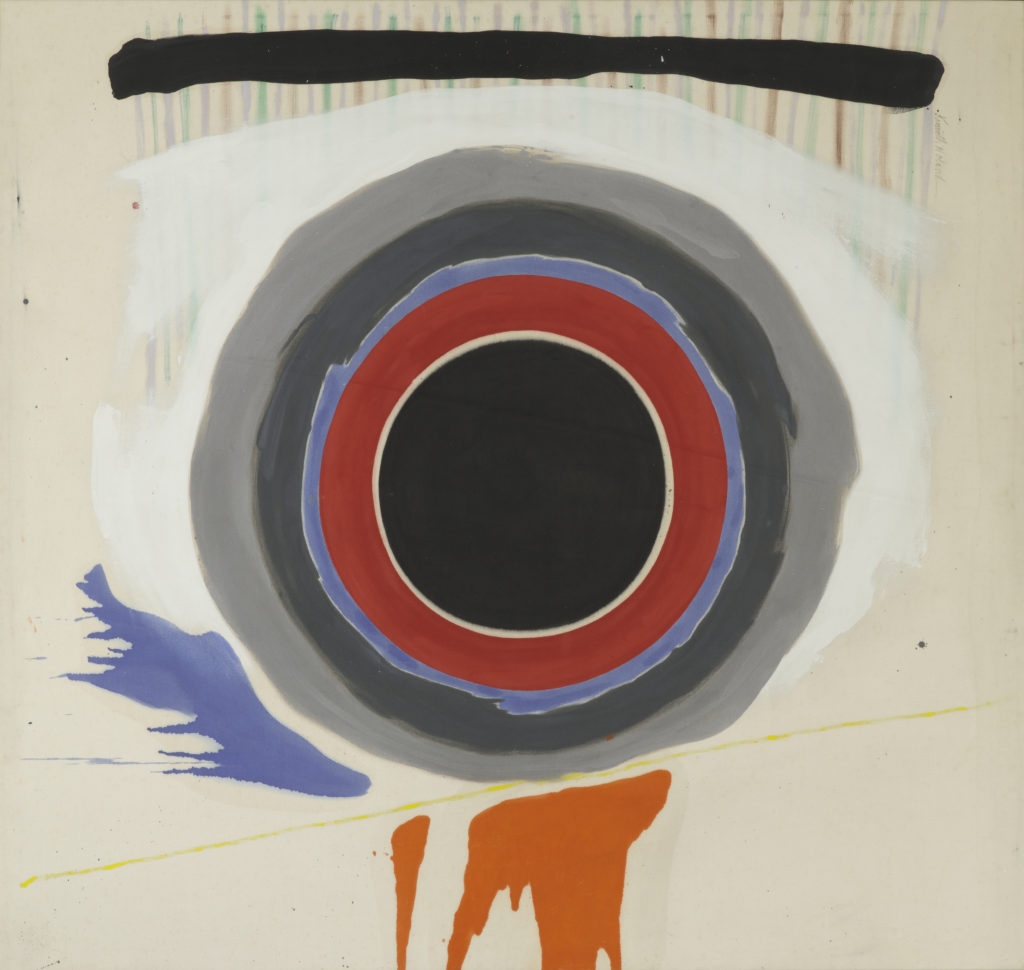Tide (work of art)
Información sobre la obra de arte
Key Ideas
- Artist Kenneth Noland made nearly 200 paintings of concentric circles, or circles that share a center. Tide was one of his first circle paintings. He painted simple shapes to draw attention to the colors and show how colors interact with one another.
- Noland was known as a “color field painter.” Color field painters created art that focused on large washes of color. These artists did not aim to tell a story with their art.
- Noland often painted the center circle with hard edges and the outermost circle with rough edges. This creates an illusion that makes the circles appear to grow and to shrink.
- Noland studied at Black Mountain College, a progressive arts school in Western North Carolina. He was inspired by the techniques of his teacher, Josef Albers.
Más información
Kenneth Noland was an American abstract artist and color field painter. Color field painting is an art style that was popular in the mid-20th century. Color field artists created large washes of colors in their paintings. These paintings did not tell a story. The way the colors looked and interacted with each other was most important to these artists. Noland’s paintings focused on simple shapes like circles, stripes, and chevrons.
Noland created nearly 200 paintings of concentric circles. He experimented with changing the composition and colors of the circles. A unique feature of Noland’s paintings is the way in which he painted each circle. The innermost circle has a hard, solid edge, and the outermost circle has a rough, “brushy” edge. This draws the viewer’s eye to the inner circle and makes the circles appear to grow and shrink. The composition of Tide was inspired by Josef Albers and his Homage to the Square series of paintings. Albers created thousands of paintings of nested squares in different colors. The squares in Albers’s paintings also appear to expand and contract.
Noland studied with Albers at Black Mountain College in Western North Carolina. Black Mountain College had a progressive approach to education and focused on giving students a well-rounded arts education. Noland attended Black Mountain College on the G.I. Bill after serving in World War II. The G.I. Bill was a government program designed to help World War II veterans pay for their education and find jobs.
Other artists who inspired Noland include Jackson Pollock and Helen Frankenthaler. Noland painted with his canvas on the floor (like Pollock) and applied paint directly to unprimed canvases (like Frankenthaler).
Recursos adicionales
Recursos para los profesores:
- Review an enrichment activity about Black Mountain College, the art school in North Carolina where Noland studied.
- Explore a lesson plan about shapes in art from the Virginia Museum of Fine Arts.
- Review color theory lesson plans from the Tyler Museum of Art.
- Watch interviews with Noland and other artists with whom he worked.
Recursos para los estudiantes:
- Watch a video to learn how to create a Noland-inspired painting.
- Watch a video about color field painting and learn what makes it unique.
- Explore a family activity inspired by another painting by Noland.
- View another artist’s painting and compare it to Tide. How are the two paintings similar? How are they different?

